How to Choose the Best Chair Exercise Machine for Seniors
Chair exercise machines are a safe and low-impact way for seniors to exercise, helping to boost strength and mobility from a seated position.
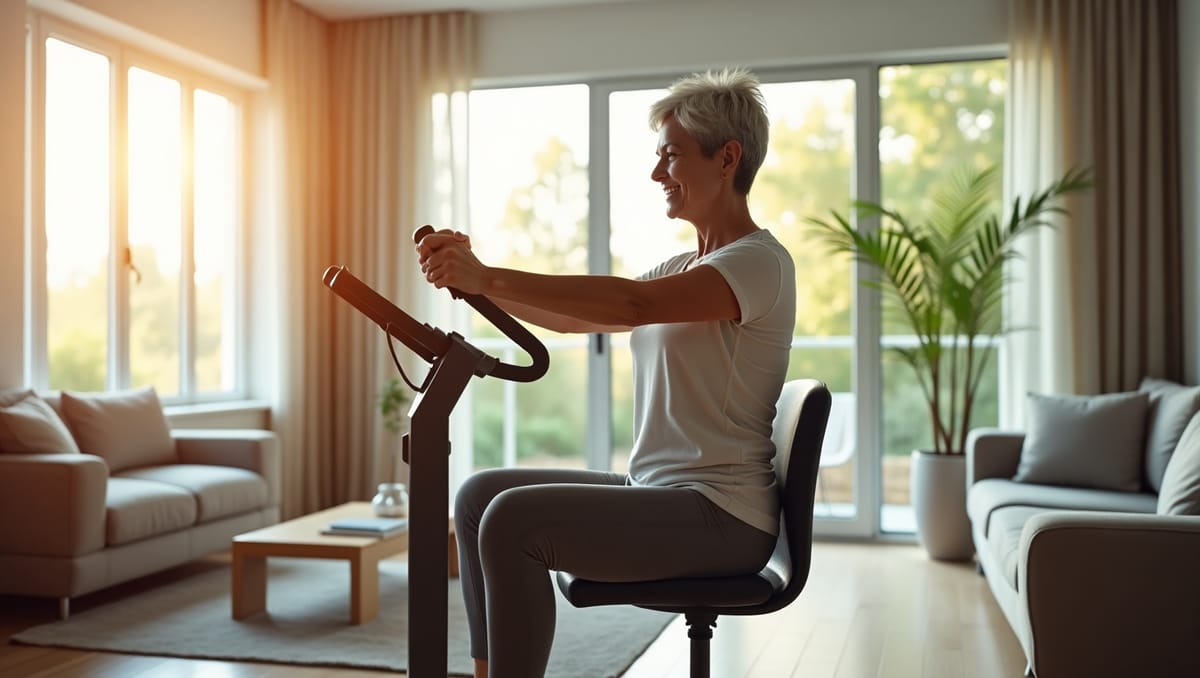
For seniors, maintaining physical activity is a cornerstone of a healthy and independent life. However, physical limitations, joint pain, or concerns about falling can make traditional exercise challenging. The good news is that a solution exists that is both safe and highly effective: the chair exercise machine. These compact, low-impact devices allow for a full-body workout from the comfort and security of a seated position.
Chair exercise machines make it easier than ever to achieve these goals, offering a way to improve cardiovascular health, build muscle strength, and increase mobility without the risks associated with standing exercises.
This comprehensive guide will walk you through everything you need to know about these versatile devices, from a detailed buyer's guide to the top-rated products on the market, to help you find the best chair exercise machine for seniors and take a powerful step toward a more active lifestyle.
Buyer’s Guide
How to Find the Best Chair Exercise Machine for Seniors
Choosing the right chair exercise machine is key to ensuring a safe, comfortable, and effective workout. Here’s what to look for when shopping:
1. Look for Stability and Safety
The machine should have a wide, non-slip base that stays securely on the floor or carpet during use. Rubber feet are a must. A sturdy frame is essential to prevent tipping or movement, providing a solid foundation for your workout and preventing accidents.
2. Adjustable Resistance Levels
The ability to easily adjust resistance is crucial for a progressive workout. Look for machines with dial or digital controls that allow you to increase or decrease the intensity. This ensures the machine can adapt to your fitness level as you get stronger and provides a more challenging workout over time.
3. Digital Monitor and Tracking
Many modern machines come with a small digital monitor. This feature is highly valuable as it tracks key metrics like time, distance, calories burned, and repetitions. Having this feedback can be very motivating and helps you track your progress over time.
4. Portability and Storage
Consider where you will be using and storing the machine. Look for lightweight models with a built-in handle that make them easy to move. If space is an issue, a compact design that can be easily stored under a chair or in a closet is an ideal choice.
5. Versatility and Comfort
Some machines are designed for both leg and arm exercises, offering a full-body workout from a seated position. Look for comfortable, non-slip pedals and hand grips. An ergonomic design ensures a natural, comfortable movement, reducing strain on joints and muscles.
Top 5 Chair Exercise Machines for Seniors
Here are five top-selling chair exercise machines on Amazon that are highly rated for seniors, based on their safety, versatility, and user feedback.
Sunny Health & Fitness Pedal Exerciser For Seniors
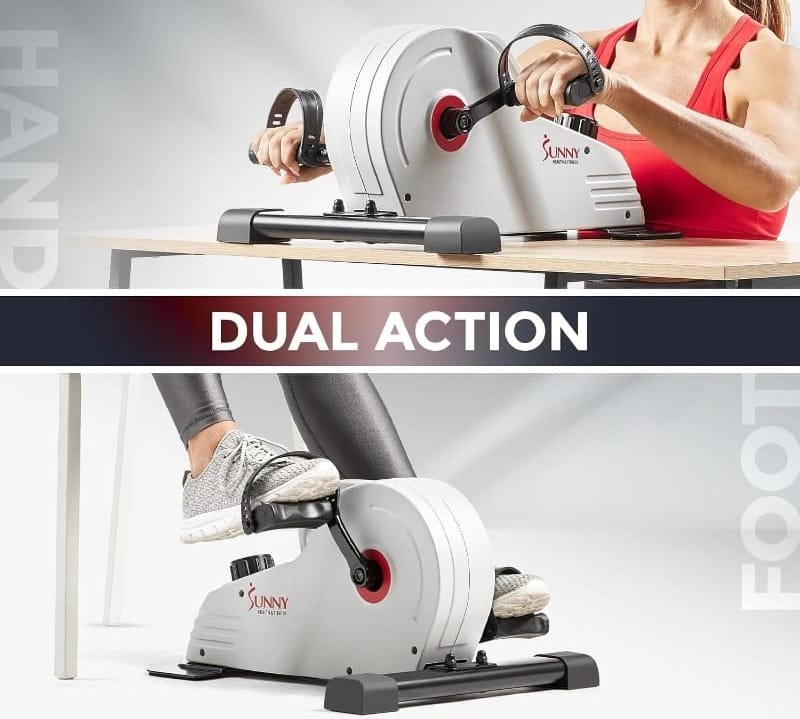
This is a top-rated, versatile machine that allows for both leg and arm workouts. It features a wide, stable base and an adjustable resistance knob, making it suitable for a wide range of fitness levels. The non-slip pedals and comfortable grips ensure a secure and pleasant workout experience.
- Pros:
- Offers a dual function for both arm and leg exercises.
- Features a large digital monitor to track progress.
- Very stable with a sturdy steel frame and non-slip pads.
- Cons:
- The digital monitor can be small and hard to read for some users.
- No built-in handle, making it slightly less portable.
- Expert Rating: 4.7/5 - An excellent all-in-one choice for a full-body, seated workout.
Himaly Under-Desk Pedal Exerciser

This compact and lightweight pedal exerciser is perfect for those with limited space. It’s designed to fit easily under a desk or in front of a couch, allowing you to exercise while watching TV or reading. The resistance is smooth and quiet, making it ideal for use in shared living spaces.
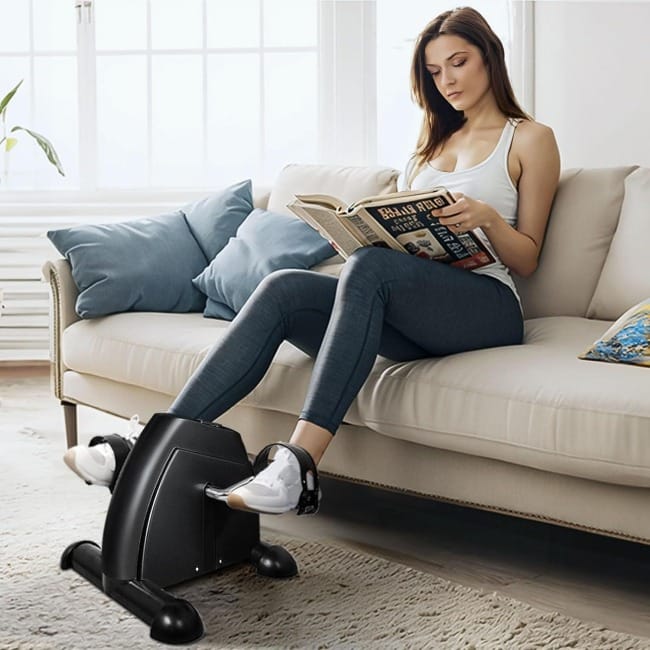
- Pros:
- Extremely portable and easy to store.
- Quiet operation with its smooth pedal mechanism.
- Affordable price point.
- Cons:
- Does not have a built-in monitor; you will need to time your workouts.
- Lighter weight can sometimes cause it to slide on very smooth surfaces.
- Expert Rating: 4.3/5 - A great, budget-friendly option for discreet and convenient exercise.
Sunny Health & Fitness Smart Recumbent Bike
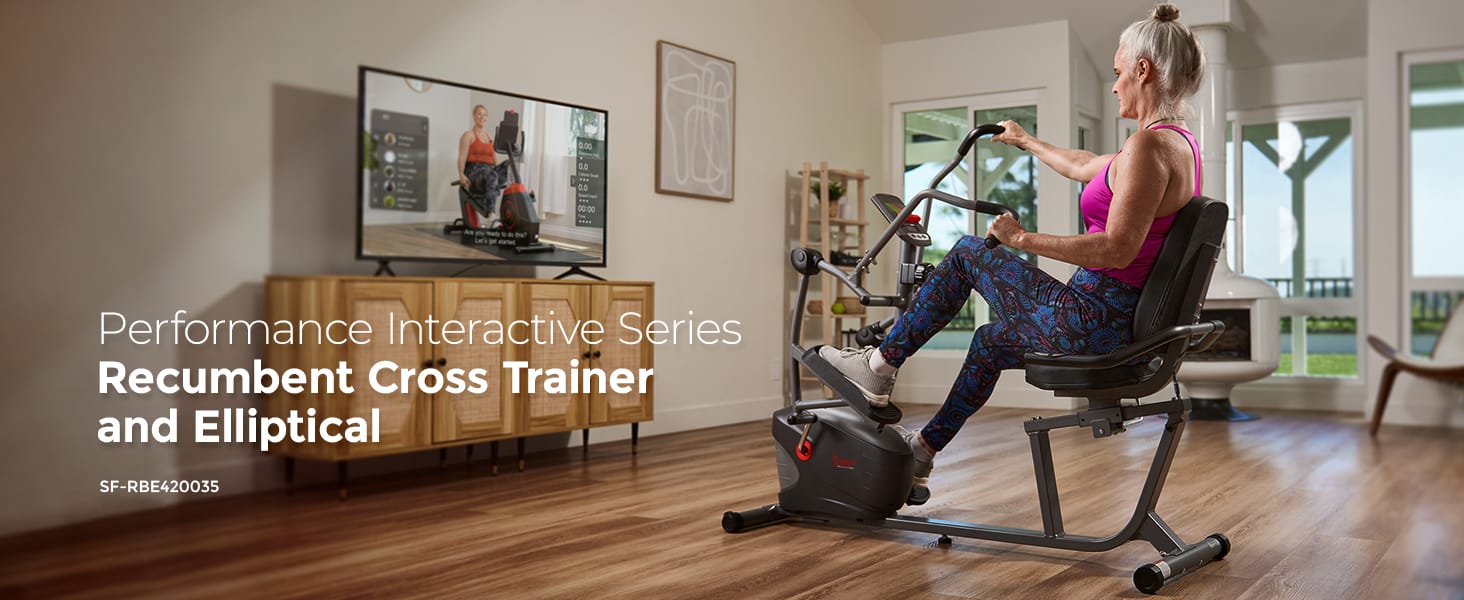
This machine takes the concept of a pedal exerciser to the next level with a recumbent motion. The gentle, fluid movement is exceptionally easy on the knees and ankles, providing a fantastic low-impact cardio workout. The wide pedals and ergonomic design prioritize comfort above all else.
- Pros:
- The recumbent motion is gentle on joints.
- Large, comfortable pedals for secure footing.
- Built-in handle makes it easy to move.
- Cons:
- Larger footprint than a traditional pedal exerciser.
- Higher price point.
- Expert Rating: 4.8/5 - The best choice for those with significant joint pain or mobility issues.
YOSUDA Under Desk Bike Pedal Exerciser
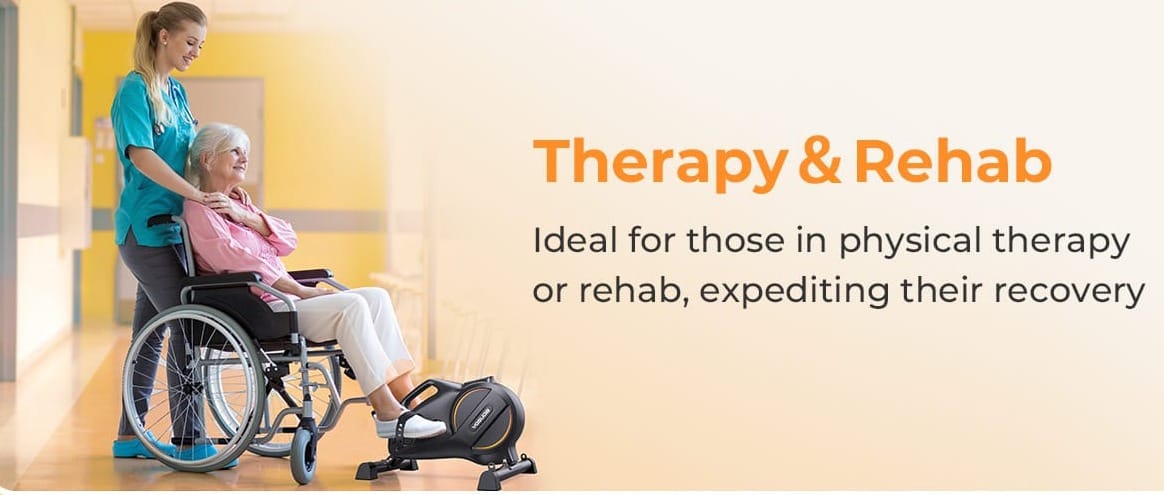
Designed for those who want to build strength, this machine features a more advanced, variable resistance system. It includes a smart digital display that tracks speed and reps, and it has a sturdy frame that can handle more intense seated workouts. The pedals also have adjustable straps for a more secure fit.
- Pros:
- Offers a greater range of adjustable resistance.
- Includes a more comprehensive digital monitor.
- Adjustable pedal straps for added security.
- Cons:
- It can be louder than bungee-based or compact models.
- It may be too advanced for absolute beginners.
- Expert Rating: 4.5/5 - A top-tier machine for building strength and endurance.
Mini Under Desk Bike - Portable Foot Hand Cycle Peddler
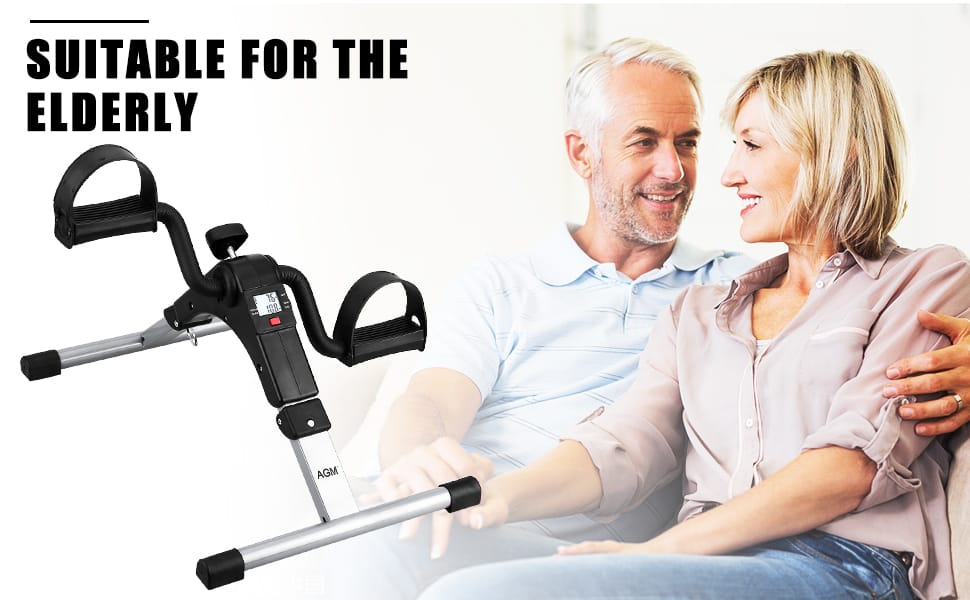
This model is the ultimate choice for portability and convenience. It has a unique folding design that collapses into a small, easy-to-carry unit with a handle. The resistance is manually adjustable with a simple knob, and the machine is quiet and lightweight.
- Pros:
- Extremely compact and foldable for easy storage and travel.
- Lightweight design with a built-in handle.
- Good value for money.
- Cons:
- The frame may feel less stable than a fixed, non-folding model.
- No digital monitor included.
- Expert Rating: 4.2/5 - A fantastic choice for those who need a portable, space-saving solution.
Frequently Asked Questions
About Chair Exercise Machines
Q. Are chair exercise machines actually effective?
Answer: Yes — chair exercise machines can be effective, but it depends on your goals and how you use them.
Chair-based exercise equipment is designed to provide low-impact workouts while you’re seated, which makes them especially helpful for older adults, people recovering from injuries, or anyone with limited mobility. They can help improve circulation, increase flexibility, strengthen muscles, and burn calories without putting excessive strain on the joints.
For example, pedal exercisers (mini exercise bikes) can boost cardiovascular health and leg strength, while resistance-band chair systems can work your upper body. Many people also use them while watching TV or working, so they sneak in more activity throughout the day.
That said, if your goal is intense muscle building or high-calorie burn, chair exercise machines won’t replace a full gym workout. But as part of a balanced fitness routine — or as a stepping stone toward more active exercise — they’re a practical and effective option.
The key is consistency. Even 15–30 minutes a day can add up to noticeable benefits over time.
Q. How often should I use a chair exercise machine?
Answer: The right frequency depends on your fitness level, health goals, and the type of chair exercise machine you’re using — but for most people, aiming for 3–5 sessions per week is a great starting point.
If you’re new to exercise or recovering from an injury, begin with shorter sessions (10–15 minutes) two or three times a week. As your strength and stamina improve, you can increase to 20–30 minutes per session, most days of the week.
The beauty of a chair exercise machine is that it’s low-impact, gentle on the joints, and adaptable for different fitness levels. You can use it for:
- Cardio: Light pedaling or arm movement to get your heart rate up.
- Strength training: Resistance bands or weighted attachments to build muscle.
- Mobility and rehab: Slow, controlled movements to keep joints flexible.
Listen to your body — some people find daily use energizing, while others need rest days for recovery. If you have chronic conditions or mobility limitations, it’s wise to check with your healthcare provider before starting a new routine.
Bottom line: For general fitness, using your chair exercise machine most days of the week in manageable sessions is ideal. Consistency is key — even 10 minutes a day can make a noticeable difference in circulation, strength, and energy.
3. Can I use these machines for my arms as well as my legs?
Answer : Yes, many exercise machines can be used for both your arms and legs — but it depends on the type of machine you’re talking about.
For example, rowing machines are a full-body workout superstar. They target your legs during the push-off, your arms and shoulders during the pull, and your core throughout the motion. Similarly, ellipticals with moving handlebars let you work your arms while you’re stepping, giving you a more balanced workout. Some resistance bands or cable machines can also be adjusted to target either the upper or lower body, depending on your exercise choice.
On the other hand, treadmills or stationary bikes are primarily lower-body focused unless you combine them with upper-body moves like holding light weights or using a separate arm workout afterward.
So, if you want a machine that pulls double duty for arms and legs, look for something designed for full-body engagement, like a rowing machine, an elliptical with moving handles, or a total-body resistance system.
Q. Is a seated elliptical better than a pedal exerciser?
Answer: Whether a seated elliptical is “better” than a pedal exerciser depends on your goals, fitness level, and comfort needs. Both can be great for low-impact cardio, but they work a bit differently.
A seated elliptical gives you a smoother, more natural range of motion that mimics walking or cycling, which can be easier on the joints. Many people find it more comfortable for longer sessions because the elliptical motion engages more muscles in the legs and sometimes even the core. It’s a good choice if you want a steady cardio workout that feels fluid and reduces strain on the knees.
A pedal exerciser, on the other hand, is smaller, lighter, and often cheaper. It’s perfect for quick activity breaks at your desk or while watching TV. However, the motion can be a bit more “up and down” compared to the elliptical’s glide, which some people with knee or hip issues may notice.
In short:
- Choose a seated elliptical if you want a more full-range, low-impact workout and don’t mind a slightly larger machine.
- Choose a pedal exerciser if you want something compact, portable, and budget-friendly for light daily movement.
For many people, the seated elliptical ends up being more comfortable for sustained workouts, while the pedal exerciser shines in portability and convenience.
Q. How do I prevent the machine from sliding on the floor?
Answer: Keeping your exercise machine stable and preventing it from sliding during use is important for safety and comfort. Here are some effective tips to stop your machine from sliding on the floor:
- Use a Non-Slip Mat: Placing a heavy-duty rubber or anti-slip exercise mat under your machine is one of the easiest and most effective solutions. These mats provide traction and protect your flooring from damage.
- Rubber Feet or Pads: Check if your machine has rubber feet. If they’re worn out or missing, replace them or add adhesive rubber pads to improve grip and reduce movement.
- Velcro Strips or Grip Tape: Applying industrial-strength Velcro strips or grip tape between the machine’s base and the floor can help anchor it firmly in place.
- Adjustable Levelers: Some machines come with adjustable feet to level the equipment and keep it steady, especially on uneven floors. Make sure to adjust these properly.
- Weight Stabilizers: Adding weights or sandbags near the base of larger machines can increase stability and prevent shifting during workouts.
- Secure the Area: Make sure the area around the machine is clean and dry. Dust, moisture, or debris under the machine can cause it to slide easily.
If you combine these solutions, especially a quality non-slip mat and good rubber feet, you’ll significantly reduce any sliding and enjoy a safer workout experience.
Key Takeaway
A chair exercise machine is a fantastic tool for seniors who want to stay active in a safe, controlled, and comfortable way. By choosing a model with a sturdy frame, adjustable resistance, and a monitor, you can find a device that perfectly fits your needs. This simple, effective machine can be a game-changer, helping you build strength, improve mobility, and maintain your independence for years to come.
